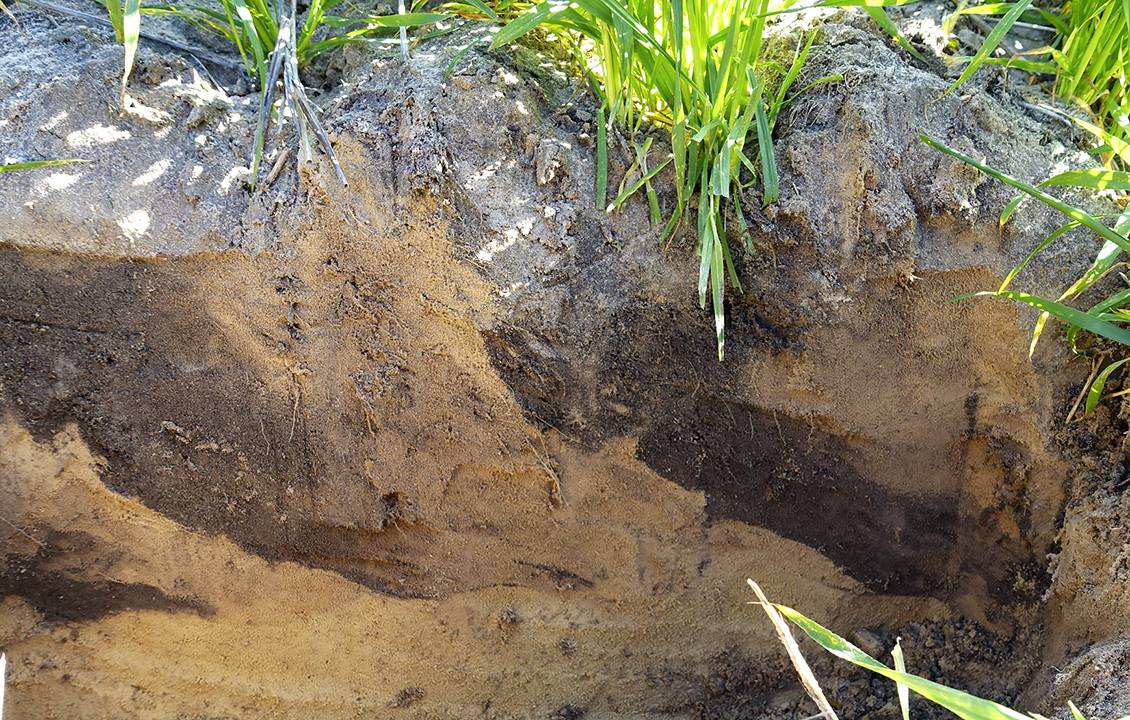Date
2022/08/24
Duration
4 min read
ebook
Soil Quality: 8 Sodic & Alkaline Soil
Video talent
Wayne Parker, DPIRD
Video production
Peter Maloney, DPIRD
Organisations
SoilsWest
WA Department of Primary Industries and Regional Development
Murdoch University
Grains Research and Development Corporation
Aim: This trial was implemented to test three hypotheses:
-
Deep ripping in red clay soil will increase root abundance at depth.
-
Gypsum in-furrow, at a low rate, in combination with deep ripping will improve yield stability in drier seasons.
-
Combining deep ripping, water harvesting, and furrow-applied gypsum will have an additive effect on crop yield

Deep ripping with amendments trial for yield improvement of sodic soil
The premise behind this trial is that for sustained improvement of soil physical properties, such as increased infiltration rate, deep ripping and gypsum should be applied together; gypsum should provide stabilisation of soil aggregates and assist in decreasing dispersion at the soil surface.
Key messages
Deep ripping for yield improvement of sodic soil remains unrecommended.
Background
Location: Merredin
Soil type: Sodic red clay
Average rainfall: Annual 361 mm, growing season 250 mm
Mechanical deep tillage is one method of providing structure in an otherwise structureless soil. In such soil, high clay content and dispersion combine to produce soil with strength beyond the capacity of roots of annual crop species to penetrate. As sodicity and alkalinity increase down the profile soil structure becomes massive, structureless and dense. Clay soil that does not shrink and swell during wetting and drying cycles is unable to ‘self-repair’. Further, without the annual intrusion of roots into the subsoil there is no ability to improve structure. In these circumstances mechanical tillage is required to implement structure. When undertaking mechanical tillage, care needs to be taken to ensure that toxic subsoil is not brought to the soil surface: if this occurs then deep ripping can cause a decrease in crop yield.
Deep ripping provides fractures to the depth of ripping which allows for greater root exploration of the soil. It often provides improvement of yield potential in the year of implementation which can be seen with the increased crop biomass. When deep ripping is applied alone, any increase to yield is often short-lived, only one to two years. Dispersion causes the collapse of the structure provided by the deep ripping.
The premise behind this trial is that for sustained improvement of soil physical properties, such as increased infiltration rate, deep ripping and gypsum should be applied together; gypsum should provide stabilisation of soil aggregates and assist in reducing dispersion at the soil surface.
Results summary
- The treatments in this trial did not improve yield and, while ripping resulted in increased root abundance, combining it with mounding and a low rate of gypsum did not provide an additive effect on yield compared to standard sowing.
- Deep ripping with a slant tine ripper reduced plant establishment, increased root growth and shoot biomass during a dry spring period but resulted in less barley yield and poorer grain quality. When considered as a main effect, ripped treatments produced more biomass, but yield was significantly decreased. Total September rainfall for the site was 9 millimetres, which is lower than average. The ripped plots ‘hayed off’ prematurely and were unable to meet the yield potential.
- The inter-row mounds in this trial were designed to simulate the mounding achievable by growers on a broadacre scale and were not covered with plastic. Previous trials using plastic sheeting or ‘tin hats’ found significant yield improvement over nil treatments. It is hypothesised that covering mounds serves to not only increase water flow into the furrow but also to reduce evaporation.
- While rainfall in spring was limited, the seasonal rainfall was above average, and the addition of 100 kilograms per hectare of gypsum was therefore insufficient to affect soil structure. It had been anticipated that an ‘electrolyte effect’ would improve water availability in the root zone of the plant and result in additional yield. Other researchers in Western Australia have measured yield responses of 38.5% and 24.2% with an in-furrow addition of 50 kilograms per hectare of gypsum in 2019 and 2020 respectively. However, these results occurred in seasons with below-average rainfall, and this may have allowed greater flocculation before diluting the gypsum sufficiently to allow soil to re-disperse in this zone.
- Deep ripping for yield improvement of sodic soil remains unrecommended.
References
ebook Soil Quality: 8 Sodic & Alkaline Soil
Barrett-Lennard E, Hall D, Parker W and Munir R (2022).















